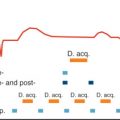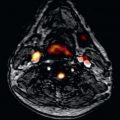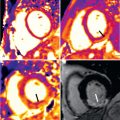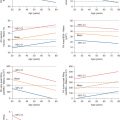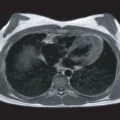- Christopher M. Kramer
- Michael Salerno
Cardiovascular magnetic resonance (CMR) has become an increasingly important tool in the armamentarium of the cardiovascular imager. It has also had an increasingly prominent role in guidelines developed by various societies, including the Society for Cardiovascular Magnetic Resonance (SCMR), American College of Cardiology (ACC), American Heart Association (AHA), European Society of Cardiology (ESC), and other societies. The role of guidelines is to direct the field, reduce unwarranted variability, and improve the overall quality of the practice of cardiovascular imaging. Because it often takes years from concept to publication for societal guideline recommendations to be developed, they generally lag behind the state of the science and clinical trials and therefore must be taken into context. This chapter will review the state of CMR in recent guidelines.
The SCMR has put out several guideline documents. The first was the 2008 document that created standardized protocols for performance of CMR. These protocols included most CMR procedures performed, from stress imaging to evaluation of cardiomyopathies, pericardial diseases, and so on. Some of the CMR manufacturers used these guidelines to create protocols on their scanners that could be used to follow these guidelines. These protocols were updated in 2013 and newer imaging pulse sequences, such as T1 and T2 mapping, were incorporated into the protocols. These will continue to be updated as the field evolves. Neither of these documents covered congenital heart disease protocols in sufficient depth and thus SCMR commissioned a separate protocol document to cover these diverse disease processes.
Soon after the initial protocols document was published, the SCMR commissioned a document reviewing standardized reporting guidelines. This document reviewed idealized reports for studies including how to report stress tests, volumetric studies, and so on. Many centers and report vendors have incorporated these guidelines into their reporting templates. Finally, the SCMR developed a document reviewing proper analysis techniques for various types of CMR images. These included guidance for the quantification of left ventricular (LV) volumes from cine imaging and scar quantification from late gadolinium enhanced (LGE) images amongst others. This document set the standards for analysis that are being used in most CMR laboratories around the world.
In 2010, the ACC published a document that reviewed the state of the art in CMR including most of the standard clinical techniques and the evidence behind them. This document was a consensus document with input from other societies including the AHA, SCMR, American College of Radiology (ACR), and North American Society of Cardiovascular Imaging (NASCI). The document was quite comprehensive and served as an up-to-date review of the field at that time. However, it did not serve as a guideline because no recommendations were made as to when a certain CMR procedure should or should not be used in a given clinical scenario. This document replaced an older consensus document regarding indications for CMR that was published in 2004 and developed through the ESC.
CMR plays an important role in US multimodality guidelines with additional guidelines soon to be published. One crucial set of expert documents are the appropriate use criteria (AUC) developed by the ACC, in conjunction with many other societies that outline which imaging tests are (A) appropriate, may be (M) appropriate, or are rarely (R) appropriate, given a particular clinical scenario. The first set of AUC guidelines for CMR was published in conjunction with computed tomography (CT) in 2006 and evaluated each single imaging modality against appropriateness. This document evaluated only 33 clinical scenarios and identified 17 as appropriate for CMR, 7 as uncertain (now termed may be appropriate), 9 as inappropriate (now termed rarely appropriate). Appropriate indications for CMR included: (1) stress testing in patients who had intermediate pretest probability of coronary artery disease (CAD) and were unable to exercise or had an uninterpretable electrocardiogram (ECG); and (2) those with a stenosis identified by x-ray or CT angiography of unclear significance. Most of the appropriate indications were in the structure and function category, such as postmyocardial infarction, cardiomyopathies, myocarditis, complex congenital heart disease, cardiac masses, pericardial disease, and preatrial fibrillation ablation. Myocardial viability and valvular assessments were also deemed appropriate.
The initial AUC documents were single modality. Since that time, the field has evolved toward the development of multimodality imaging documents. The first of this type was the 2014 publication regarding the evaluation of patients with suspected or known ischemic heart disease. In the ischemic heart disease document, CMR stress testing was rated appropriate in the same scenarios as listed previously for the single modality document, but also in symptomatic patients with high pretest probability of CAD. CMR was also deemed appropriate in patients with new systolic or diastolic heart failure and those with high-grade ventricular arrhythmias. Additional appropriate indications for CMR include patients with abnormal resting ECG and intermediate to high global CAD risk, and those with abnormal ECG stress studies or stenosis identified on prior x-ray or CT coronary angiography. Uncertain ECG stress findings or uncertain x-ray or CT coronary angiography results were also appropriate indications for CMR. Patients with new or worsening symptoms and prior ECG stress testing, nonobstructive CAD on x-ray angiography, obstructive CAD on CT coronary angiography, or coronary calcium score >100 were thought to be appropriate. Postrevascularization patients who were symptomatic with an ischemic equivalent were appropriate for CMR stress testing. Many other indications were considered as may be appropriate depending on the individual patient’s clinical characteristics. AUC documents presently in preparation are in the structure and function category and will cover both myocardial and valvular diseases, which will likely include more of the key strengths of CMR.
Another set of guidelines for the management of patients with stable ischemic heart disease were published in 2012 by the ACC, in collaboration with multiple other organizations. This document used slightly different gradings from the previously mentioned AUC documents. Recommendations are classified as class 1 (procedure should be performed), class IIa (it is reasonable to perform the procedure), class IIb (the procedure may be considered, or class III (procedure should not be performed). The level of evidence supporting the recommendations is also considered (A being the highest level with multiple randomized clinical trials or metaanalyses, B with a single randomized trial or nonrandomized studies, and C the lowest with only consensus opinions or case studies). Stress CMR received a class IIa recommendation (level of evidence B) for patients who are able to exercise with intermediate-to-high pretest probability of obstructive CAD and an uninterpretable ECG. This was lower than the class I recommendations for exercise stress echocardiography and stress single-photon emission computed tomography (SPECT) in the same setting. Similarly, stress CMR was classified as class IIa (level of evidence B) for patients in the same category but who are unable to exercise, which was again lower than the class I recommendation for pharmacologic stress echo and SPECT, likely because the latter techniques provide information about the patient’s exercise capacity. For patients with known stable ischemic heart disease, CMR received a class IIa recommendation (level of evidence B) for patients who are able to exercise but have an uninterpretable ECG or for those who are unable to exercise regardless of ECG interpretability. CMR received a class I (level of evidence B) recommendation in patients with stable ischemic heart disease who are being considered for revascularization in the setting of known coronary stenosis with unclear physiologic significance. For patients with known stable ischemic heart disease and worsening symptoms who are incapable of exercise, again CMR was rated IIa (level of evidence B) whereas stress echo and SPECT were class I. In those with stable ischemic heart disease and silent ischemia who are unable to exercise, have an uninterpretable ECG, or were incompletely revascularized, all stress imaging modalities received a class IIa recommendation (level of evidence C). In summary, CMR was rated lower than stress ECG and SPECT in many of the clinical scenarios, but this document is several years old and it did state that more evidence would be generated in regards to the utility of CMR in these scenarios in the ensuing years.
In recent years, the ACC and ACR have partnered to develop two multimodality AUC documents that concern particular topics within cardiovascular medicine. The first such document covered imaging in heart failure and was published in 2013. This document covered appropriateness of CMR, and all of the other major imaging modalities, in various clinical scenarios including new onset heart failure, ischemia, and viability evaluation, evaluation for implantable cardioverter-defibrillator (ICD) or biventricular pacemaker placement, and repeat evaluation of heart failure. CMR was rated as appropriate in many of these indications, with the exception of post-ICD or pacer placement because of the relative contraindication of CMR performance, as well as repeat evaluation of heart failure. The second ACC/ACR document covering AUC dealt with imaging in the emergency department and was published in 2015. Clinical scenarios covered in this document included suspected ST elevation myocardial infarction (STEMI), chest pain and non-STEMI (NSTEMI), suspected pulmonary embolus, and suspected acute aortic syndrome. Appropriate roles for CMR in the emergency department were the use of stress CMR in the evaluation of the chest pain patient with myocardial infarction excluded, as well as in aortic syndromes. In many other scenarios, CMR was rated as may be or rarely appropriate.
ACC and ESC have led the way in the development of guidelines that cover specific disease processes and point out where CMR is of use in these diseases. The first such document was the 2008 ACC guideline for the management of patients with congenital heart disease. CMR was recommended as an important modality to have available at a center that specializes in caring for the congenital heart disease patient. CMR was noted to be useful in many clinical conditions involving congenital heart disease, especially the postoperative patient, and was deemed complementary to ECG for many of these patients. In 2013, the ACC and AHA led the development of guidelines for the management of heart failure. CMR received a class IIa level of evidence C recommendation for evaluation of LV volumes and function as well as for evaluation of myocardial scar and infiltrative diseases (class IIa, level of evidence B). By comparison, ECG received a Ia recommendation, level of evidence C, for initial evaluation of the heart failure patient. Any type of noninvasive evaluation (including CMR) was given a class IIa, level of evidence C, for evaluation of ischemia and/or viability in this setting, but with no discrimination between the various modalities. In the valvular disease management guidelines published in 2014, CMR receives a class IA, level of evidence B, recommendation for evaluation of patients with moderate to severe aortic regurgitation or primary mitral regurgitation who have inadequate ECG windows and a class IA, level of evidence C, for evaluation of the aortic sinuses and ascending aorta for patients with bicuspid aortic valves and known aortic dilatation. CMR received a class IIb, level of evidence C, recommendation regarding its use in measuring right ventricular volumes in the setting of severe tricuspid regurgitation. With emerging literature regarding the utility of CMR in many more common conditions, its role in many of these guidelines will likely expand in the future.
CMR receives little mention in some of the ACC documents regarding common clinical conditions. For example, in the document regarding management of atrial fibrillation, CMR was mentioned only in the data supplement as a potential method (with atrial LGE) to assess left atrial wall fibrosis. In the 2014 guideline covering management of the patient with NSTEMI, it is only recommended in the patient with stress (Takotsubo) cardiomyopathy. In the 2015 supraventricular tachycardia guideline, CMR is only discussed as a method to assess the risk of arrhythmias in repaired tetralogy of Fallot patients. In the 2013 AUC criteria regarding patient selection for ICD or cardiac resynchronization therapy (CRT), CMR is discussed as one of several imaging modalities to evaluate LV ejection fraction. An exception to this lack of discussion of CMR in disease-specific guidelines is the 2014 Heart Rhythm Society document on patients with myocardial sarcoidosis, which recommended CMR as a class IIA indication when a patient with extracardiac sarcoidosis has symptoms, ECG, or echocardiographic findings suggestive of possible cardiac involvement.
CMR indications are covered somewhat more frequently in current ESC documents than in ACC and AHA guideline documents but remains limited. In the 2016 ESC guidelines in regards to management of acute coronary syndromes, CMR is discussed as an excellent method for the assessment of function, perfusion, and viability, but it does not have a particular recommendation for use in given clinical scenarios other than making the diagnosis of stress (Takotsubo) cardiomyopathy. CMR was given a more prominent role in the guideline document regarding the management of patients with sudden cardiac death. For example, CMR or echocardiography was recommended as an evaluation for family members of patients with sudden cardiac death, and CMR is discussed as an alternative to echo for the evaluation of ventricular structure and function in patients with high-grade ventricular arrhythmias. CMR was recommended in pediatric patients with frequent premature ventricular contractions and it received a class IIB recommendation for the evaluation of patients with myocarditis. In athletes with suspected structural heart disease, it was given a class 1C recommendation.
CMR was discussed quite extensively in the 2016 ESC heart failure guidelines. It received a recommendation of class I, level of evidence C, for evaluation of LV structure and function in patients with poor echocardiographic windows and in patients with congenital heart disease. For discrimination of ischemic and dilated cardiomyopathy, CMR received a recommendation of class IIa, level of evidence C, and a class I, level of evidence C, for evaluation of infiltrative cardiomyopathies such as amyloidosis, Anderson–Fabry disease, sarcoidosis, noncompaction, Chagas disease, and hemochromatosis. CMR and other noninvasive stress modalities were given a class IIb, level of evidence B, recommendation in the evaluation of ischemia and viability in patients with ischemic cardiomyopathy before revascularization. In the 2014 Hypertrophic Cardiomyopathy guidelines, CMR is discussed as a method to accurately measure increased wall thickness especially when some segment(s) are unable to be visualized by echocardiography (class IIa, level of evidence C). It also states that “CMR should be considered in patients with hypertrophic cardiomyopathy at their baseline assessment if local resources and expertise permit,” class IIa, level of evidence B. CMR with LGE received a class IIa, level of evidence C, for evaluation of apical hypertrophic cardiomyopathy and for patients before septal myectomy or alcohol septal ablation. The document suggests repeating CMR every 5 years in stable disease or every 2 to 3 years in those with progressive disease (class IIb, level of evidence C).
In summary, CMR is slowly and steadily gaining traction in cardiovascular guideline documents. Overall, at the present time, ESC guidelines include a greater discussion of the role of CMR than ACC/AHA guidelines. As more data become available from ongoing large multicenter clinical trials and registries, and with the ongoing expansion of CMR access, CMR will undoubtedly have an ever-increasing role in guidelines regarding the management of patients with cardiovascular disease.
Stay updated, free articles. Join our Telegram channel

Full access? Get Clinical Tree


